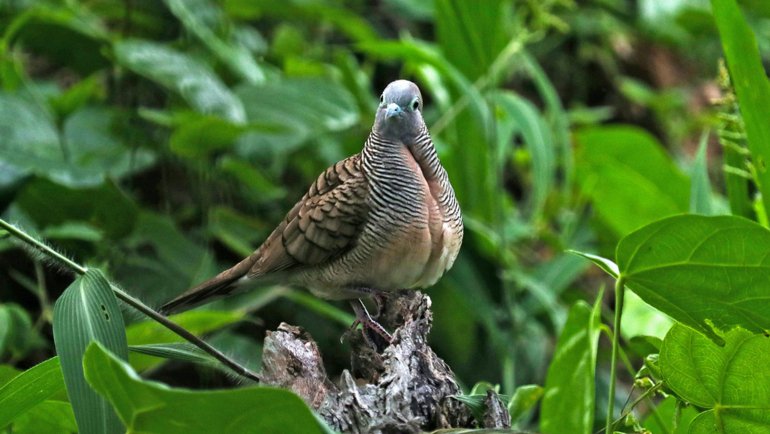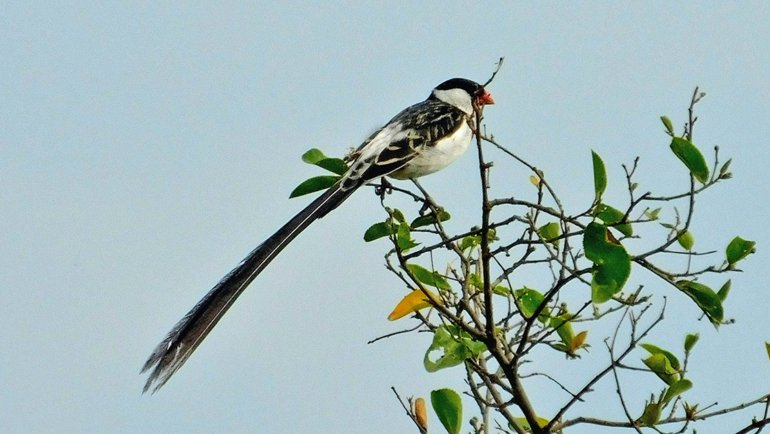Adélie penguins (Pygoscelis adeliae) are really charming birds, with their black and white plumage and their quirky behavior, and they are no short of amazing when you know they thrive in one of the harshest environments on Earth, showcasing incredible adaptability and resilience.
They behavior is absolutely captivating, and their aptitudes in the water are impressive. On this page, you will find a collection of surprising, little-known facts about Adélie penguins that will leave you in awe! Read on to learn more about them.
Contents
show
Essential Information About The Adelie Penguin
- Scientific name: Pygoscelis adeliae
- Type of Animal: Bird
- Size: 70 cm (27.5 in) tall.
- Weight: 3-6 kg (6.6-13.2 lbs)
- Geographic range: Antarctica, South Sandwich Islands
- Habitat: Rocky beaches
- Diet: Mostly krill, and small fish.
- Predators: Killer whales, leopard seals. Skua gulls and giant petrels attack eggs and chicks.
- Reproduction: They breed in summer (October to March). They lay one or two eggs in a stone nest, and usually one survives. Parents take turns to incubate the egg.
- Conservation status: Least Concern. Population is increasing.
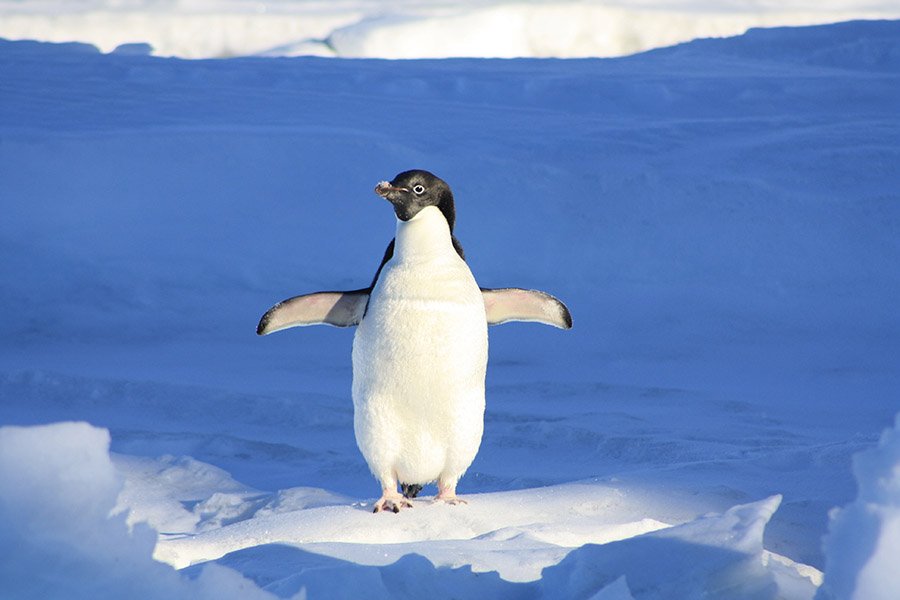
24 Little-Known Facts About The Adelie Penguin
- Adelie penguins are named after Adélie Land, a region of Antarctica discovered by French explorer Jules Dumont d’Urville in 1840, now the portion of Antarctica claimed by France. He named it after his wife, Adèle.
- Adélie penguins inhabit the Antarctic continent and numerous small coastal islands around it. During the winter season, they migrate offshore, seeking the seas near the Antarctic pack ice. This allows them to find food (because they need access to the open ocean) and avoid the harsh Antarctic conditions on land.
- In Antarctica, Adélie penguins are primarily found in breeding colonies that can include thousands of individuals along rocky, ice-free coastlines. They’re a highly social species.
- Adelie penguins are known to be quite curious and bold, often approaching humans without fear. This is because they don’t really have any land predators and do not recognize humans as predators.
- Adélie penguins, as well as other penguins, are known for their “catastrophic molt,” during which they lose all their feathers at once and grow a new set within a couple of weeks.
- Adelie penguins use a variety of vocalizations to communicate with each other, including calls for mating, territory defense, and parent-chick recognition.
- Although Adélie penguins may seem slow and clumsy on land, waddling at a pace of 1.5 mph, they are incredibly agile in the water. These birds are built for swimming, with streamlined bodies and strong flippers that enable them usually swim at a speed of 4-8 km/h (2.5-5 mph). But if they need to, they can reach frankly amazing speeds of up to 72 km/h (45 mph) in the water. This allows them to efficiently hunt for prey and escape predators.
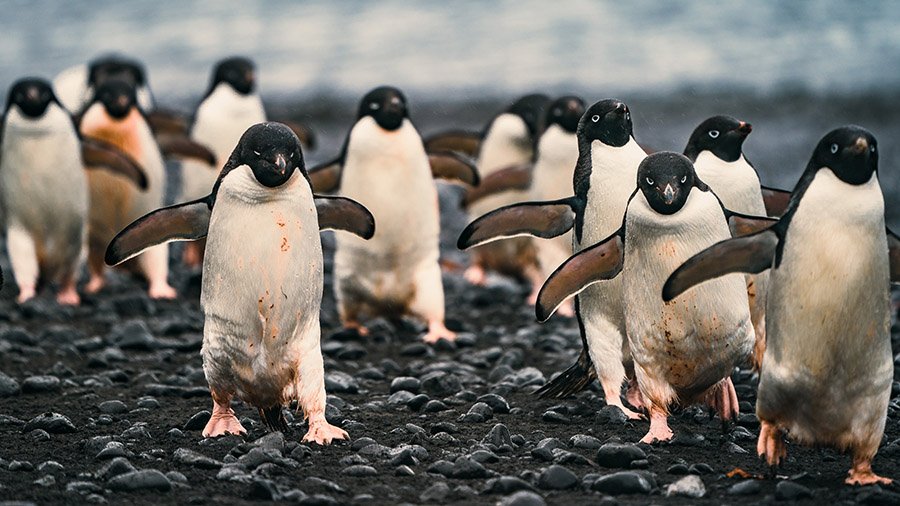
- As we have just seen, Adélie penguins are strong swimmers. They can cover great distances while foraging for food, sometimes traveling up to 185 miles (300 km) away from their breeding colonies. This ability to travel long distances ensures that they can find sufficient food resources for themselves and their offspring.
- These penguins are also exceptional divers, capable of reaching depths of 180 meters (590 feet) to catch their prey. Their diving ability allows them to access food resources that may be unavailable to other marine predators.
- The Adélie penguin is considered a mid-sized bird, with a body length of 70-73 cm (28-29 in) and a weight range of 3.8 to 8.2 kg (8.4 to 18.1 lb). This size allows them to maintain body heat more effectively in the cold Antarctic environment. In order to keep warm in their frigid environment, Adelie penguins huddle together in large groups.
- Adélie penguins have dark eyes, which help them absorb more radiant energy in the extreme Antarctic cold. This is yet another adaptation that increases their ability to survive in one of the harshest environments on Earth.
- The average lifespan of an Adélie penguin in the wild is estimated to be between 16 and 19 years. This relatively long life expectancy can be attributed to their robust survival strategies, such as foraging and predator avoidance skills.
- Adélie penguins can be easily distinguished from other penguin species by their unique appearance, which includes a black head, a white ring around the eye, and a red bill. This distinctive coloration serves as camouflage in the water and allows them to blend in with their surroundings. When they are in the water, seen from above, their black back is hard to spot against the dark Antarctic waters. Seen from below, their white belly is hard to see against the bright sky. This adaptation is called “counter-shading”.
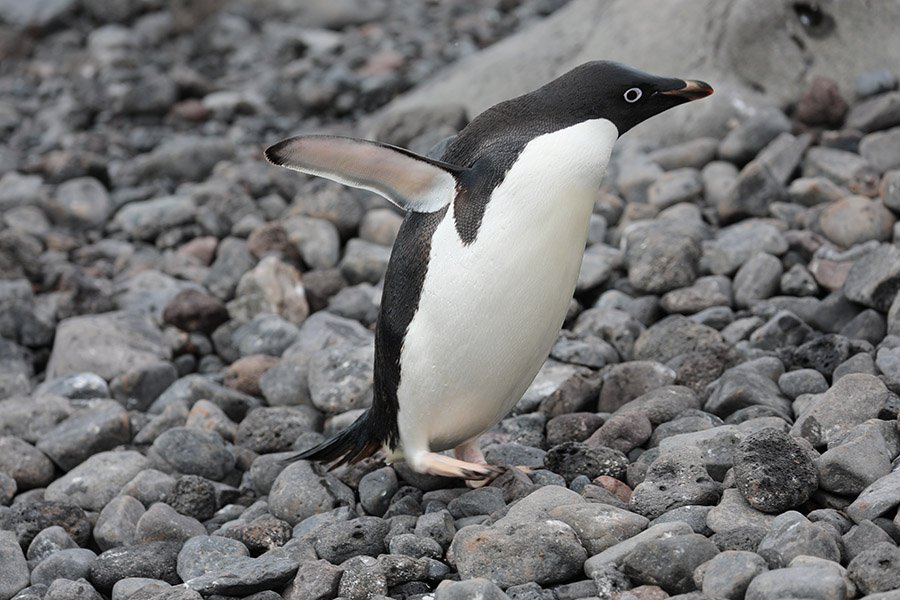
- Adélie penguins belong to the “brush-tail” penguin group, which also includes chinstrap and gentoo penguins. These three species share certain physical characteristics, such as the presence of distinctive feathers on their tails, which gave rise to the name “brush-tail”.
- Adélie penguins primarily feed on krill, but they also consume fish and squid when available. Their diet is dependent on the availability of food resources in their habitat. Adélie penguin colonies consume massive amounts of food daily. A colony of five million Adélie penguins can eat approximately 17.6 million lb (8 million kg) of krill and fish every single day! This immense consumption highlights the importance of a healthy marine ecosystem to support their survival.
- Adélie penguins have unique nesting behavior, as they build nests using small stones. They collect and arrange these stones in a circle, creating a protective barrier for their eggs. This behavior is thought to help protect the eggs from flooding and cold temperatures. Actually, these stones are really important for these animals, and Adélie penguins are notorious for stealing stones from other penguins’ nests. This behavior can lead to fights between neighbors as they attempt to defend their nests and resources.
- During the breeding season, Adélie penguins lay two eggs, and both parents take turns incubating them. This cooperative behavior ensures the eggs remain warm and safe from predators while one parent is away foraging for food.
- Once eggs hatch, Adélie penguin parents take turns foraging for food and caring for their chicks until the chicks are self-sufficient. This cooperative parenting strategy allows both parents to maintain their energy levels and protect their offspring.
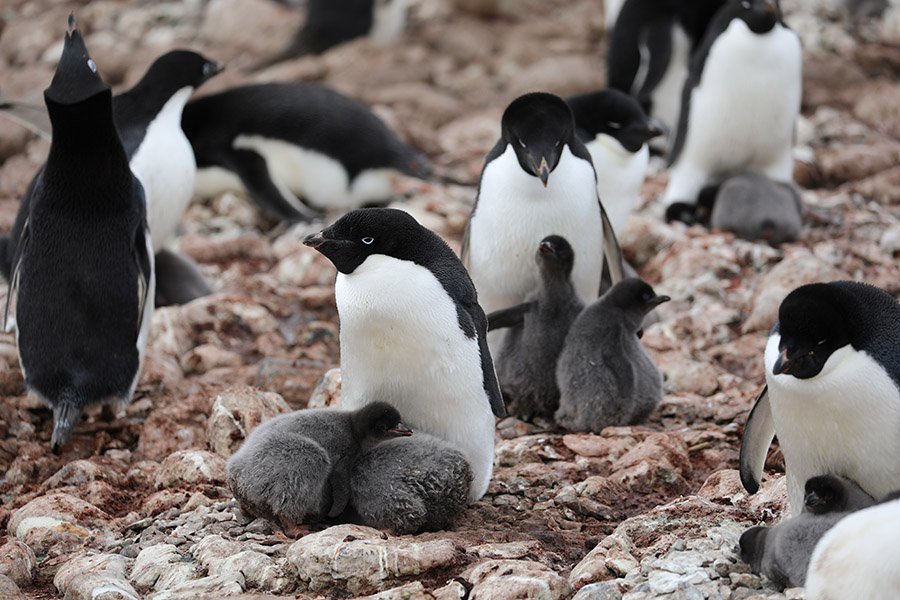
- Adélie penguin chicks are born with a downy coat, which they shed as they grow older and develop waterproof feathers. These waterproof feathers are crucial for the chicks’ survival, as they enable them to swim and hunt for food independently.
- These penguins are highly sociable and engage in intricate mating displays. They perform head-bobbing, calling, and presenting stones to potential mates to attract their attention and form strong pair bonds. These penguins are monogamous, typically mating with the same partner year after year. However, these animals are also notorious for their disturbing sexuality.
- Adélie penguins face various predators, including leopard seals and orcas in the water, while skuas and giant petrels may prey on their eggs and chicks on land. These threats require Adélie penguins to be vigilant and adaptive to survive.
- Adélie penguins have a unique way of moving on land called “tobogganing,” which involves sliding on their bellies while propelling themselves with their feet and flippers. This method of locomotion allows them to conserve energy and travel faster over snow and ice-covered surfaces.
- Adélie penguins are considered an indicator species for climate change, as their population and breeding success can be directly affected by changes in sea ice conditions. They also entirely depend on the krill population in the sea. Their sensitivity to environmental changes makes them an important species for understanding the impacts of climate change on Antarctic ecosystems.
- The global population of Adélie penguins is estimated to be around 4 or 4.5 million breeding pairs, and they are not considered endangered. However, as sea ice diminishes and human activities encroach on their habitats, these penguins may face increasing challenges to their survival.
Other Articles About Adélie Penguins
- Where Do Adélie Penguins Live? Range, Habitat, and How to See Them
- What Do Adélie Penguins Eat? A Look at Their Diet and Feeding Habits
- What Eats Adélie Penguins? Their Top 4 Predators
- Adélie Penguins’ Disturbing Sexuality, Necrophilia… and Pebble Ritual
References
- https://www.antarctica.gov.au/about-antarctica/animals/penguins/adelie-penguin/
- https://oceanwide-expeditions.com/to-do/wildlife/adelie-penguin
- https://www.nationalgeographic.com/animals/birds/facts/adelie-penguin
- https://www.wwf.org.uk/learn/fascinating-facts/adelie-penguins
- https://www.britannica.com/animal/Adelie-penguin
- https://en.wikipedia.org/wiki/Ad%C3%A9lie_penguin
- https://www.iucnredlist.org/species/22697758/157660553
